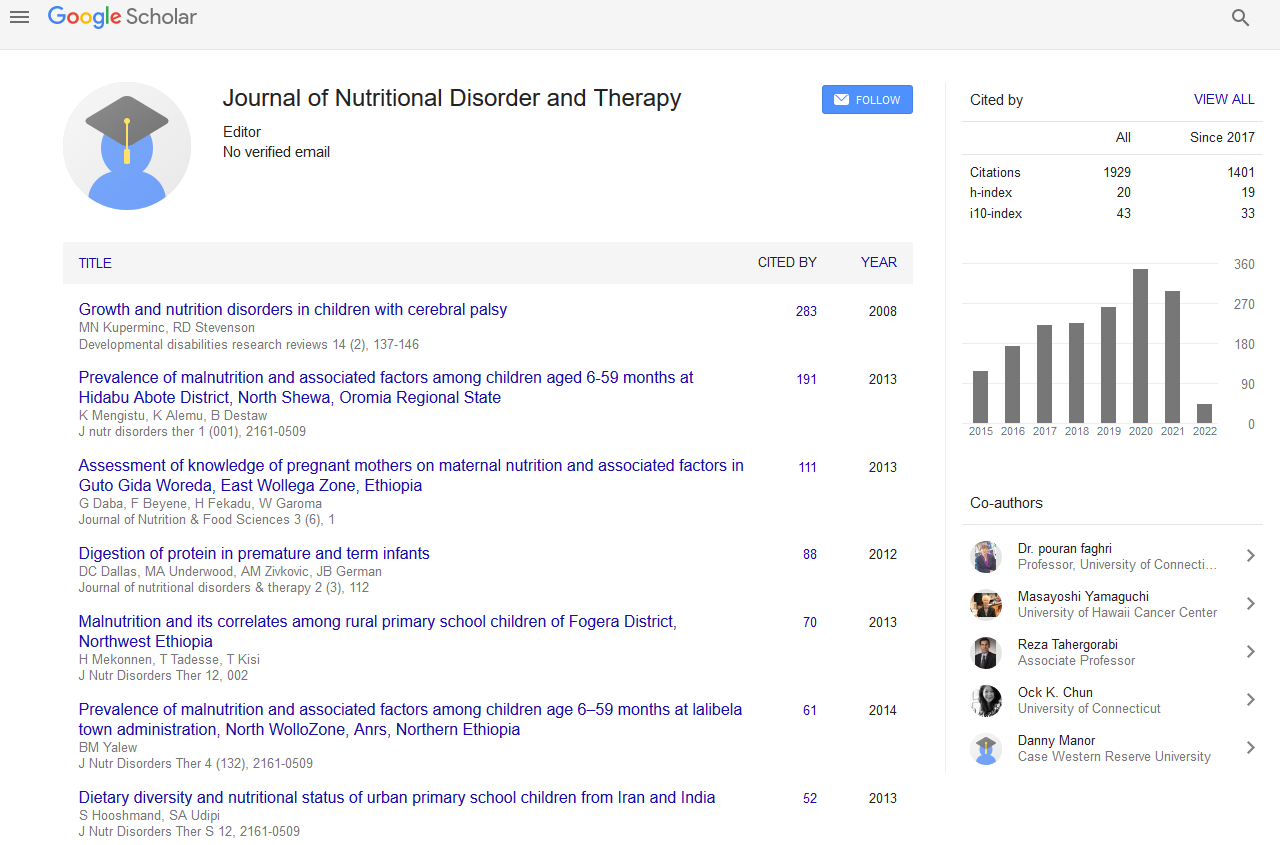Indexed In
- Open J Gate
- Genamics JournalSeek
- Academic Keys
- JournalTOCs
- Ulrich's Periodicals Directory
- RefSeek
- Hamdard University
- EBSCO A-Z
- OCLC- WorldCat
- Publons
- Geneva Foundation for Medical Education and Research
- Euro Pub
Useful Links
Share This Page
Journal Flyer

Open Access Journals
- Agri and Aquaculture
- Biochemistry
- Bioinformatics & Systems Biology
- Business & Management
- Chemistry
- Clinical Sciences
- Engineering
- Food & Nutrition
- General Science
- Genetics & Molecular Biology
- Immunology & Microbiology
- Medical Sciences
- Neuroscience & Psychology
- Nursing & Health Care
- Pharmaceutical Sciences
Abstract
Statins Therapy: Effects on Plasma Fibrinogen Levels and Fibrinolysis
Elevated plasma fibrinogen levels have been identified as an independent and strong risk factor for cardiovascular disease. At present, there are no selective oral agents that lower fibrinogen; however different drugs can influence its levels as ticlopidine (inhibitor of platelet aggregation) and fibrates (lipid lowering drugs). Statins lower cholesterol by inhibiting HMG-CoA (3-hydroxy-3-methylglutaryl-coenzyme A) reductase, which catalyzes the conversion of HMGCoA to mevalonate, the rate limiting step in cholesterol biosynthesis. In addition to lowering cholesterol, several non-lipids related benefits of statins have been reported. Briefly, statins improve endothelial function, modulate the inflammatory response, may stabilize atherosclerotic plaques, restrain thrombus formation, and others. Many of these are mediated by their ability to block the synthesis of important isoprenoid intermediates, which serve as lipid attachments for a variety of intracellular signaling molecules (Rho, Ras, and Rac). The beneficial effect of statin on plasma fibrinogen concentration still controversial. Although several studies have shown a mild decrease in plasma fibrinogen (mostly when the Clauss method is used), many others fail to find an effect of statins on plasma fibrinogen concentration. In vitro studies using different cell types have shown that statins increase tPA and decrease PAI-1 levels; however, clinical results are ambiguous. Statins modify fibrin structure leading to increased clot lysis rate and clot permeability, by decreasing tissue factor expression that alters thrombin formation.


